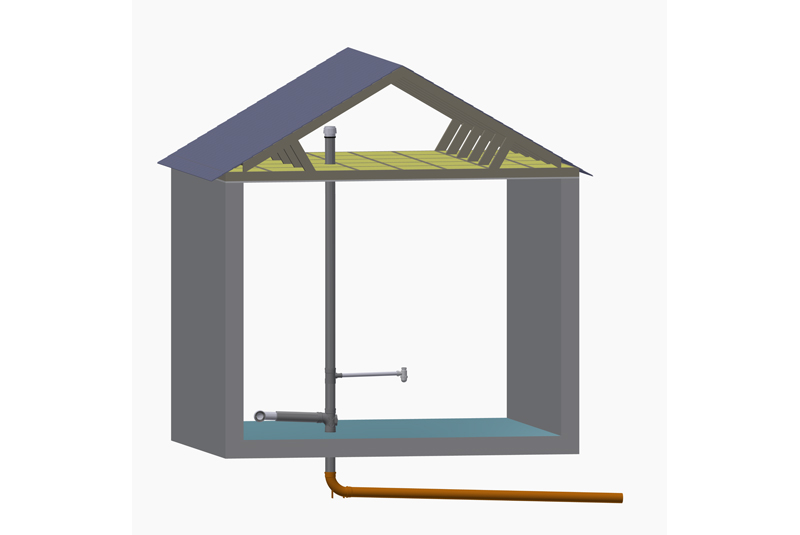
The BPF Pipes Group has launched new guidance on domestic air admittance valves (AAV) for professionals working within the plumbing sector in the UK.
The document aims to provide clear advice on how to position air admittance valves correctly, as well as highlighting the different regulations currently in place across England, Wales, Scotland and Northern Ireland.
Air admittance valves are used to ventilate soil and waste pipes so that waste water drains properly from a property. Without ventilation, air pressure changes inside the pipework due to the operation of domestic appliances. This causes waste traps on the appliances to lose their water seals, creating unpleasant odours.
Traditionally, open soil stacks have been positioned above the roofs of properties but can be damaged or accidentally covered, for example, when extensions are built. Air admittance valves, positioned inside the roof space, are said to provide a more aesthetically attractive alternative to open stacks whilst providing the same level of ventilation.
The BPF Pipes Group document, will provide a guide on the current regulations relating to soil stacks and air admittance valves, as well as operation, ventilation, capacity, ratings and location. A building control checklist is also included to help those installing such devices in domestic properties.
Steve Skeldon, Chair of the BPF Pipes Group’s working group on soil and waste, commented: “Air admittance valves have been in use for over 40 years and provide a functional and more aesthetically pleasing alternative to open soil stacks, as they are positioned inside roof voids. We want this new guidance to provide a definitive aid to those working in plumbing and venting drainage systems for both new build and refurbishment projects.”
The guidance is available online or as a downloadable PDF from the BPF Pipes Group website.












